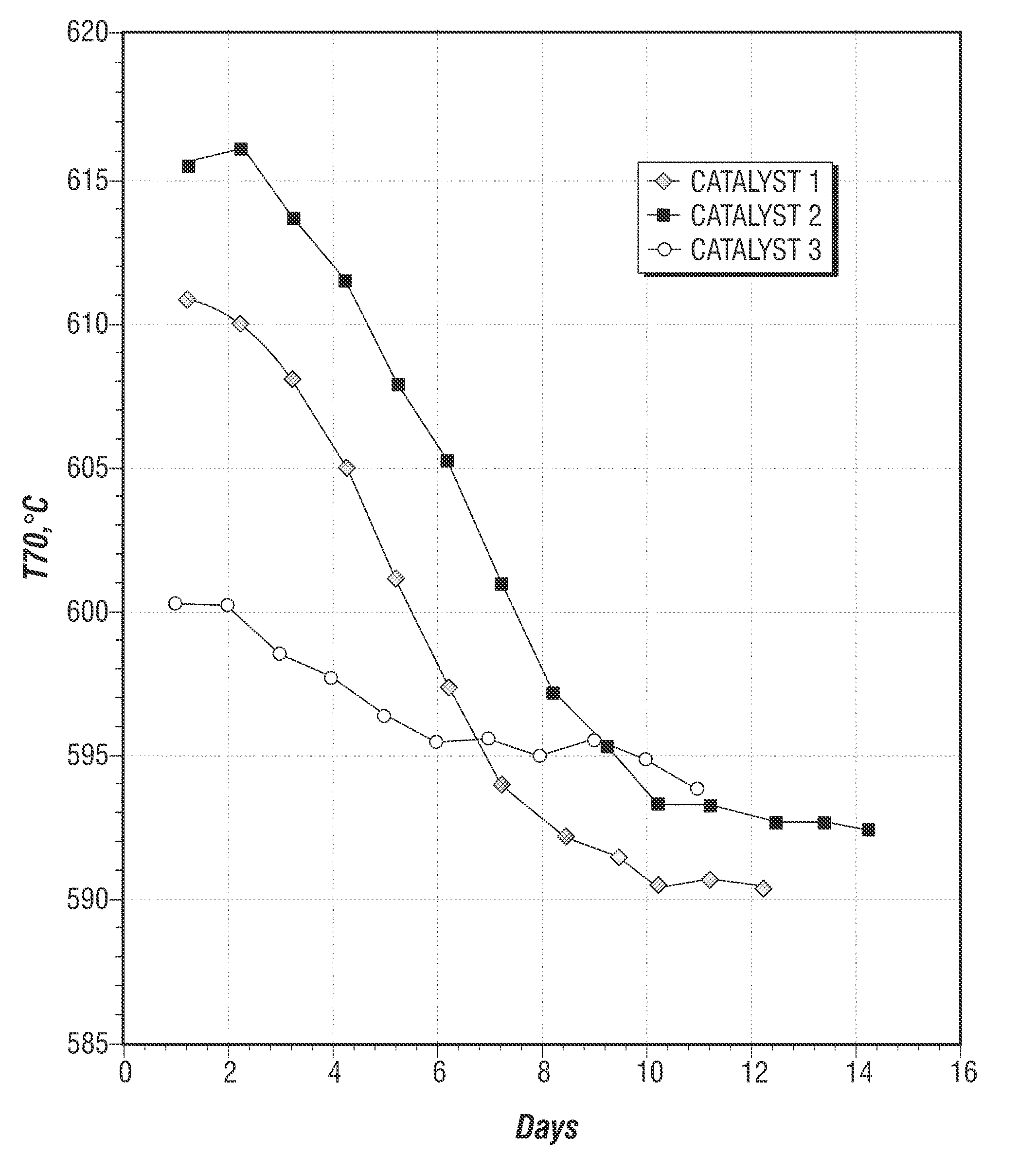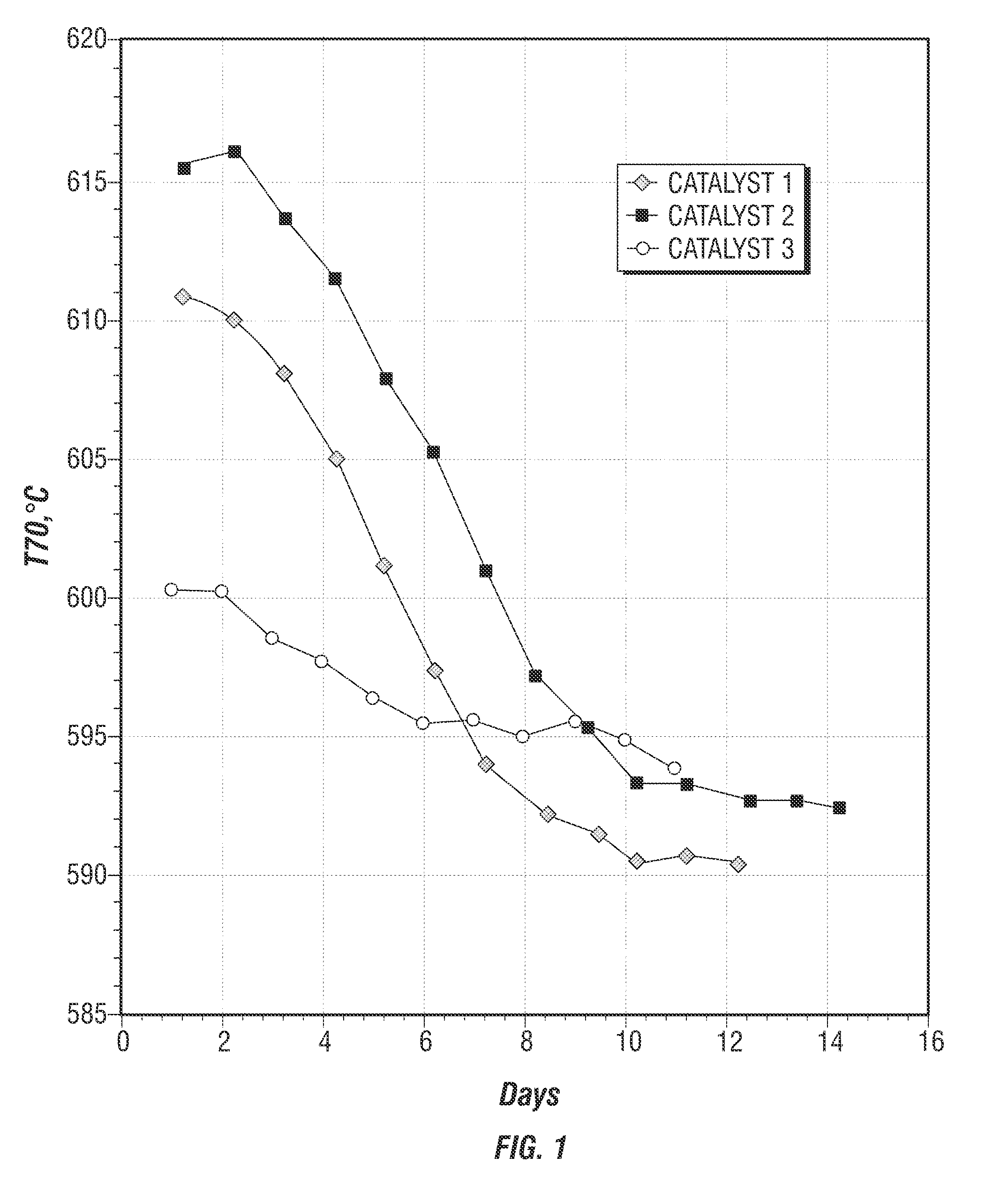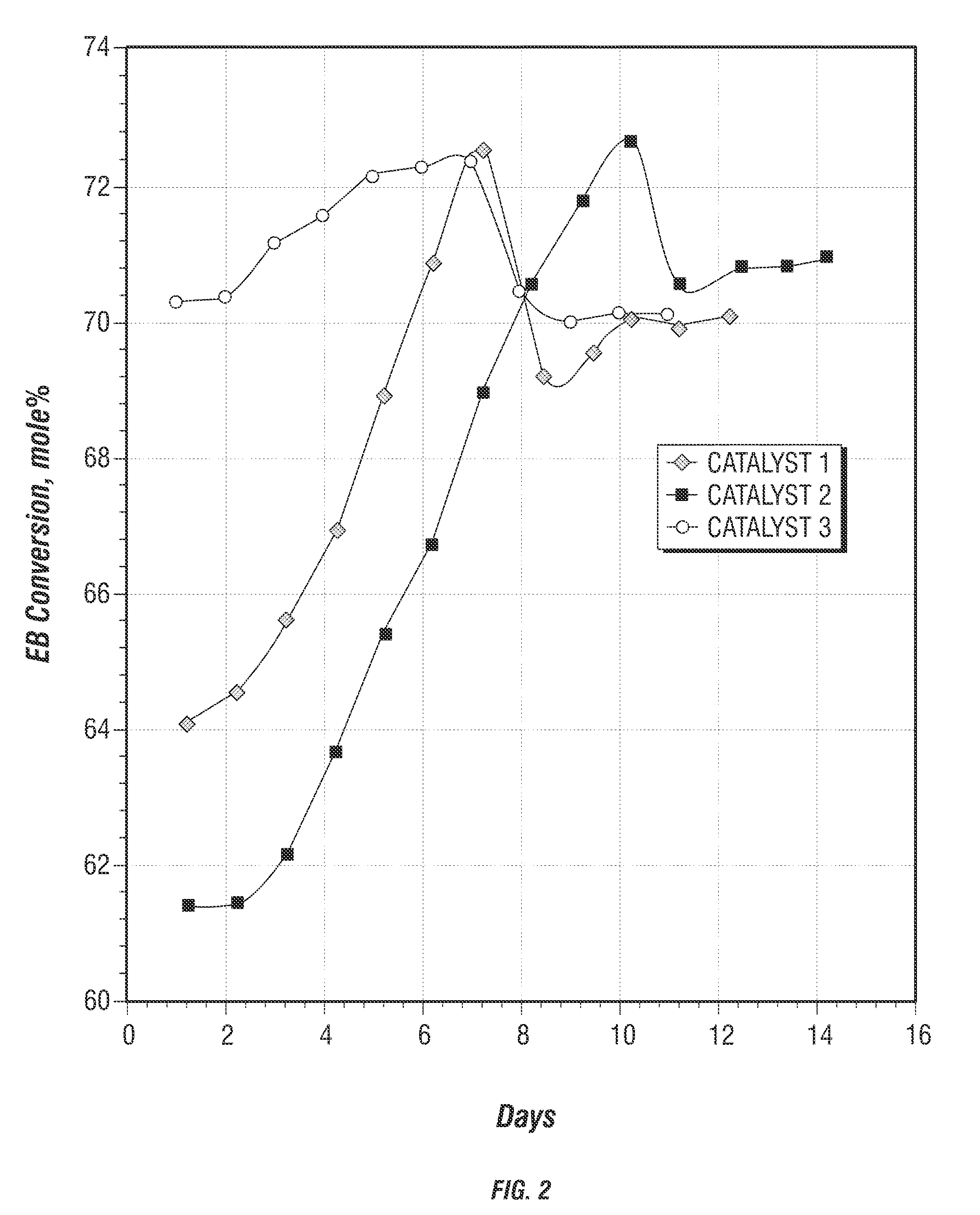Dehydrogenation catalyst, process for preparation, and a method of use thereof
a dehydrogenation catalyst and process technology, applied in the field of dehydrogenation catalysts, can solve the problems of reducing the surface area of iron oxide, less effective dehydrogenation catalysts, and expensive high temperature heat treatment steps, so as to improve the operation of a dehydrogenation system
- Summary
- Abstract
- Description
- Claims
- Application Information
AI Technical Summary
Benefits of technology
Problems solved by technology
Method used
Image
Examples
example i
[0065]This Example presents information on the properties of the regenerator iron oxides A, B, and C used in the preparation of Catalysts 1, 2 and 3 and descriptions on how the Catalysts were prepared.
[0066]Table I presents certain of the chemical and physical properties of iron oxides A, B and C. The iron oxides A and B are typical iron oxides prepared by the heat decomposition of iron chloride (regenerator iron oxide) and which were not subjected to additional treating, calcination or other chloride reduction treatments. Iron oxide C was obtained from the same supplier of the iron oxides A and B but was further treated by water washing in accordance with the invention to further reduce the chloride content.
TABLE 1Selected Chemical and Physical Properties ofIron Oxides A, B, and CUntreatedTreatedIronIronPropertyIron Oxide AIron Oxide BOxide COxide CCl (wt. %)0.0980.1110.0880.029SiO2 (wt. %)0.0090.0100.0080.011Na2O (wt. %)0.0100.0110.0070.003CaO (wt. %)0.0130.0150.0130.004MnO (wt. %...
example ii
[0071]This Example describes the procedure by which the Catalysts 1, 2 and 3 of Example I were tested, and it presents the results of such testing.
[0072]A 100 ml sample of each of the Catalysts described in Example I was used for the preparation of styrene from ethylbenzene under isothermal testing conditions in a reactor designed for continuous operation. In each test, the conditions were as follows: absolute pressure of 76 kPa, steam-to-ethylbenzene molar ratio of 10, liquid hourly space velocity of 0.65 liter / liter / hr. In each test, the reactor temperature was maintained at 600° C. for a period of 7 to 10 days. The reactor temperature was thereafter adjusted until a 70% mole conversion of the ethylbenzene was achieved.
[0073]Presented in FIG. 1 and FIG. 2 are results of the above-described testing. FIG. 1 shows the calculated catalyst activity (T70) plotted as a function of time (days) in use. FIG. 2 shows the actual ethylbenzene conversion plotted as a function of time (days). Ca...
PUM
| Property | Measurement | Unit |
|---|---|---|
| temperature | aaaaa | aaaaa |
| temperature | aaaaa | aaaaa |
| temperature | aaaaa | aaaaa |
Abstract
Description
Claims
Application Information
 Login to View More
Login to View More - R&D
- Intellectual Property
- Life Sciences
- Materials
- Tech Scout
- Unparalleled Data Quality
- Higher Quality Content
- 60% Fewer Hallucinations
Browse by: Latest US Patents, China's latest patents, Technical Efficacy Thesaurus, Application Domain, Technology Topic, Popular Technical Reports.
© 2025 PatSnap. All rights reserved.Legal|Privacy policy|Modern Slavery Act Transparency Statement|Sitemap|About US| Contact US: help@patsnap.com



